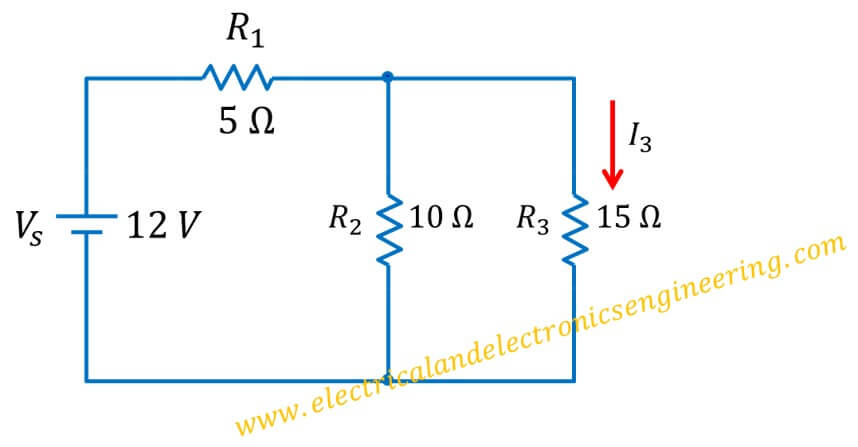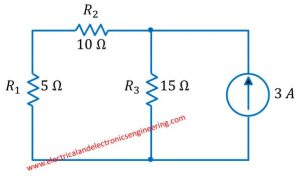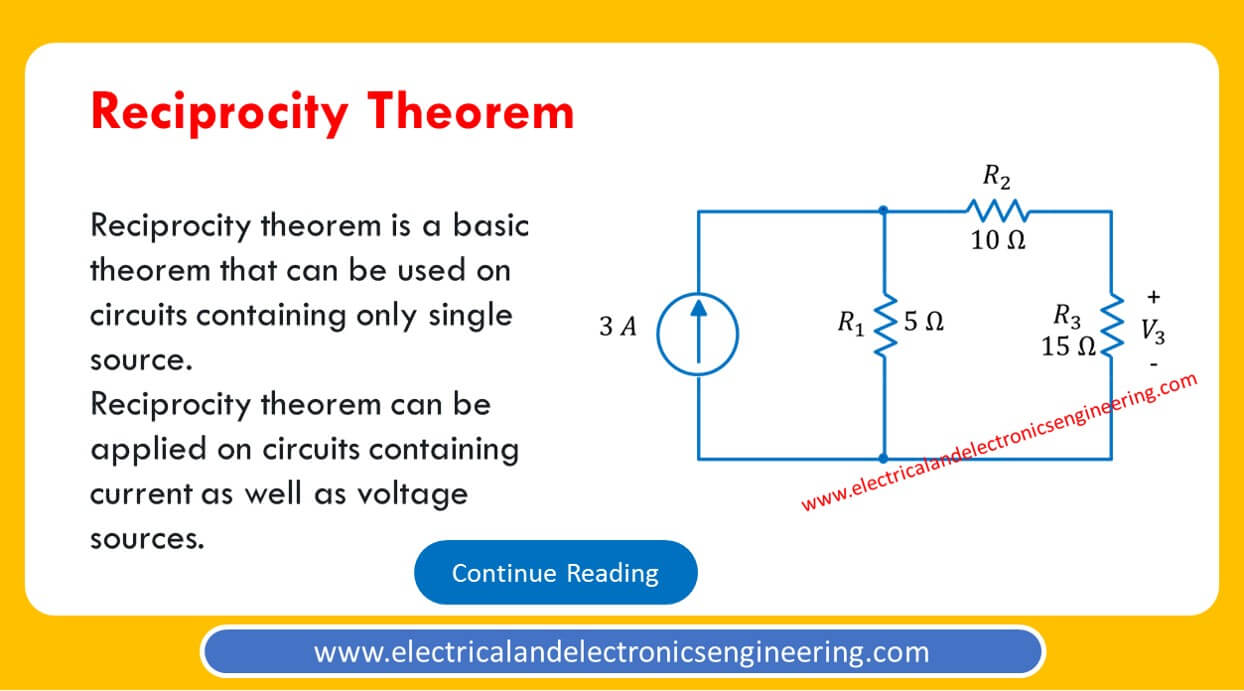Reciprocity theorem is a basic theorem that can be used on circuits containing only single source.
Reciprocity theorem can be applied to a circuit containing either a voltage or a current source.
In the case of Voltage Source
A voltage source causing some current (Let’s assume I) in a certain branch of circuit can be removed from its original location and can be moved to new location. The voltage source now in new location will produce the same current (I) in its original location.
- Remove the voltage source and move it to a new location
- Replace the original location of voltage source by a short circuit
- The polarity of source should be in a fashion so that direction of original current in the new branch remains the same
Example
Consider the circuit below:

The voltage source Vs produced voltage V3 across resistors R3 and R2 (Since both are in parallel), which can be calculated using voltage divider rule as follows:

The voltage source produced current I3:
I3 = V3/R3 = 6.54/15 = 0.436 Amps
Now let’s relocated the location of voltage source and shift it in series with source, while replacing its original position by short circuit.

Following same step as we previously did in previous case V1 can found to be 2.18 volts.
Using Ohm’s law I1 = V1/R1 = 2.18/5 = 0.436 Amps
Both cases yield same currents which is in accordance with the reciprocity theorem.
In case of Current Source
A current source that generates a voltage V at a node of circuit can be removed from its original location and connected to that node. The current source at its new location will now generate a voltage at original location which exactly equals the original voltage.
- Remove current source and move it to a new location
- Replace the original location of the current source by an open circuit
- Keep the polarity of the current source in such way that direction of original current should remain same.
Example
Consider a circuit containing current source and three resistors:

Using current divider theorem, the current across R3 is:

Using Ohm’s law, the voltage across R3 resistor is:
V3 = I3. R = 0.5 * 15 = 7.5 Volts
Now remove the current source and add it in parallel to R3.

Using current divider rule, the current across resistor R1 is:

The voltage across R1 resistor is:
V1 = I1 * R1 = 1.5 * 5 ohms = 7.5 volts
Since V3 from previous case is same as now is V1. So Reciprocity theorem is once again validated.
